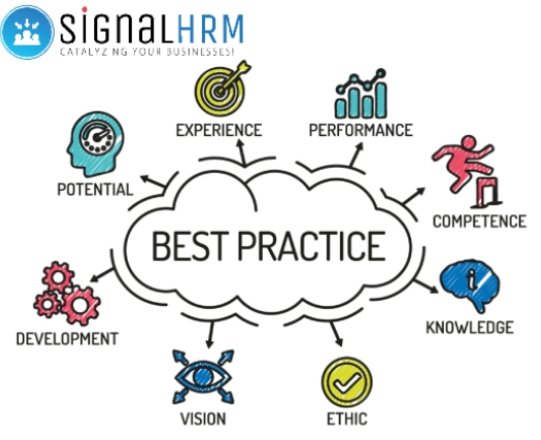
A human resource management system (HRMS) is software that stores employee information and facilitates the smooth execution of human resource functions including recruitment, training, and payroll. It is essential to implement the best practices to ensure effective employee engagement and retention with due consideration to diversity, equity, and inclusion.
Organizations must abide by different activities to engage new talent, foster a healthy workspace, comply with the rules and regulations, and offer new opportunities for growth and career advancement. Also, there is no one-size-fits-all method, businesses need to adjust their HRM practices depending on their goals and objectives
Select the right HRMS
Organizations must select an HRMS that supports their needs and goals. It is essential to consider factors such as personalization, integration, and scalability to pick the right HRMS.
Security and accuracy
The human resource management software must have adequate data entry and validation protocols to ensure the security and accuracy of data. Regular updates are necessary to protect the confidential records.
Employee Self-Service (ESS)
The ESS feature in HRMS allows employees to manage their data and perform different HR tasks such as submitting leave records, accessing pay slips, and updating personal details independently. It empowers employees and ensures improved data accuracy and quick request processing.
Organizations must conduct training to acquaint their employees with ESS and learn how it can simplify their work.
User support:
A good HRMS must have a dedicated help desk/support system to address user queries and offer quick resolution and responses to boost employee satisfaction.
Data backup and recovery:
A proper data backup and recovery approach allows organizations to maintain the confidentiality and integrity of private data. The HRMS solution must have robust data backup and recovery methods to prevent data loss. In case of system failure, there should be adequate plans to ensure business continuity.
System maintenance:
Businesses must update and maintain their HRMS management software periodically to ensure optimal functioning. For example, software updates and security patches handle the vulnerabilities and increase efficiency. Also, timely maintenance prevents system stagnation to make your system agile throughout its usage.
Training:
It is essential to have proper training for HRMS users to familiarize them with HRMS applications, features, and functions. This helps them to understand the basics of the systems and makes the transition easier.
Personalization:
Every organization has its goals and objectives. Therefore, it must customize the HRMS to fit the organization's needs. Integration with HR and business systems ensures a smooth data flow (ensuring accuracy) and reduces data silos.
Compliance and reporting:
The HRMS must comply with the HR regulations. It automates the processes, creates reports and analytics that give details of the workforce, and makes data-driven decisions.
Mobile accessibility:
The users of the HRMS application must have access to it from their mobile phones. This is incredibly helpful in remote work. Also, the HRMS mobile versions must have intuitive interfaces to offer ease of use.
Feedback and improvement:
Feedback from users and HR professionals can help understand the limitations, and problems they face, and find ways to optimize the application. A feedback loop helps you find out and gather user suggestions to improve the existing HRMS solution. This helps you to update the HRMS and tailor it to meet the needs of users and organizations.
Do you need a centralized solution for your HR operations? SignalHRM is a power-packed HRMS that helps businesses optimize their HR processes and procedures. Encompassing different modules such as leaves, attendance, expense, payroll, shifts, and recruitment, it allows you to streamline HR tasks effortlessly.
Do you want to know more?
Visit: https://signalhrm.com/